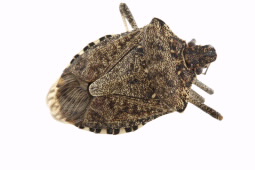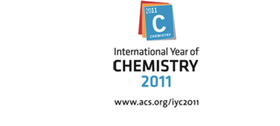EMBARGOED FOR RELEASE | October 09, 2010
Progress toward first commercial repellent for East Coast’s stinker
WASHINGTON, Oct. 9, 2010 — Help may be on the way for millions of people on the East Coast bugged out about the invasion of stink bugs. Scientists have reported a key advance in efforts to develop the first commercial repellent for stinkbugs, which are emerging as a major nuisance to homeowners and a devastating pest to some farm crops. They identified a natural substance in a fungus that infects a common weed and found that it shows potential as the first stinkbug repellent. Their study appeared in ACS’ bi-weekly Journal of Agricultural and Food Chemistry.
Hiromitsu Nakajima and colleagues note that stinkbugs are no strangers to Japan. Indeed, they long have ranked as major pests of rice crops there and in some other countries. In contrast, the brown marmorated stinkbug seems to have gotten a foothold in the United States around 1998, and since then has spread, especially in the Mid-Atlantic states, invading homes and damaging fruit and vegetable crops. The nuisance bugs get their name from the skunk-like odor they emit when crushed or annoyed. Farmers are trying to control the pests using a variety of commercial insecticides, which kill the bugs. A stinkbug repellent could be just as effective in keeping the bugs at bay, but no reports on development of such materials have appeared in scientific journals, they say.
Media Contact
Michael Bernstein
202-872-6042
m_bernstein@acs.org
Michael Woods
202-872-6293
m_woods@acs.org
The scientists isolated a fungus from the green foxtail plant, a common weed found in Japan as well as the United States and other countries. The fungus lives inside the plant and appears to help protect the foxtail from insect pests and disease. In laboratory tests, extracts of the fungus strongly repelled the white-spotted stinkbug, which they used as a test subject because it is easy to collect, maintain, and handle under laboratory conditions. The scientists identified an ingredient in the extract that is capable of repelling up to 90 percent of stinkbugs and suggest that this chemical could be part of the first repellent for controlling stinkbugs. The substance repelled the stinkbugs as effectively as naphthalene, an ingredient in mothballs and a gold-standard for measuring the effects of insect repellents. A chemically modified version of the substance was almost twice as effective napthalene.
Full text article:
“3-(4-Methylfuran-3-yl)propan-1-ol: A White-Spotted Stinkbug (Eysarcoris ventralis) Repellent Produced by an Endophyte Isolated from Green Foxtail”
Journal of Agricultural and Food Chemistry
###



